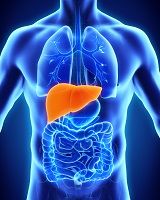Article
Treating HCV Patients Who Fail Direct-Acting Antivirals
Author(s):
All is not lost when hepatitis C genotype 1 patients fail to benefit from treatment with direct-acting antivirals (DAAs). Reporting at the 2015 Liver Meeting (AASLD) in San Francisco, CA, Fred Poordad, MD, of the Texas Liver Institute/University of Texas Health Science Center in San Antonio, TX, and colleagues said they had success retreating patients who had failed DAAs.

All is not lost when hepatitis C Genotype 1 patients fail to benefit from treatment with direct-acting antivirals (DAAs).
Reporting at the 2015 Liver Meeting (AASLD) in San Francisco, CA, Fred Poordad, MD, of the Texas Liver Institute/ University of Texas Health Science Center in San Antonio, TX, and colleagues said they had success retreating patients who had failed DAAs. The patients had been taking ombitasvir (OBV)/ paritaprevir (PTV) r, dasabuvir (DSV), and sofosbuvir (SOF). It was a multi-center study.
In an abstract presented at the meeting, the team noted that retreatment options for patients who fail DAA therapy are not yet clearly defined. “Resistance-associated variants in NS5A have been shown to persist up to 96 weeks post-treatment; thus, patients who fail regimens with NS5A inhibitors are likely to require a multi-targeted approach to retreat infection,” they wrote.
The patients all had HCV GT-1 infection. Those without cirrhosis were to receive OBV/PTV/r + DSV + SOF for 12 weeks; ribavirin (RBV) was added for patients with GT1a infection without cirrhosis. GT1a-infected patients with cirrhosis received 24 weeks of OBV/PTV/r + DSV + SOF + RBV.
All the patients had a history of previous DAA treatment failure without discontinuation for reasons other than virologic failure.
As of September 1, sustained viral response 4 was achieved in all 15 patients treated for 12 weeks. Among patients receiving 24 weeks of treatment, all seven remained virally suppressed below the lower limit of detection while on treatment. Two patients experienced serious adverse events (pneumonia and cellulitis), neither assessed as being related to the study drugs. The patient with pneumonia discontinued the study drug at week 10 and HCV RNA remained undetectable.
Their conclusion was that “The multi-targeted regimen of OBV/PTV/r + DSV ± RBV in combination with SOF appears to be a promising retreatment strategy for patients who fail DAA-containing HCV regimens, including those containing an NS5A inhibitor.
2 Commerce Drive
Cranbury, NJ 08512
All rights reserved.





